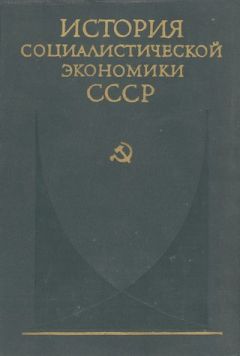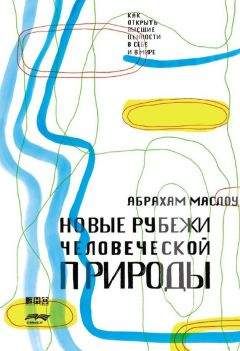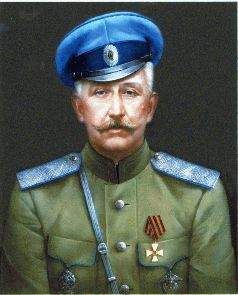72. News-week, April 16, 1979, pp. 93, 35. CBS News-New York Times Poll, The New York Times, April 10, 1979, pp. 1, 16.
73. Axsom, D., amp; Cooper, J. (1981). Reducing weight by reducing dissonance: The role of effort justification in inducing weight loss. In E. Aronson (Ed.), Readings aboufthe social animal (pp. 181-196). San Francisco: W.H. Freeman.
74. Stone, J., Aronson, E., Grain, A.L., Winslow, M.P., amp; Fried, C.B. (1994). Inducing hypocrisy as a means of encouraging young adults to use condorns. Personality and Social Psychology Bulletin, 20, 116-128.
75. Dicker-son, C.A., Thibodeau, R., Aronson, E., amp; Miller, D. (1992). Using cognitive dissonance to encourage water conservation. Journal of Applied Social Psychology, 22, 841-854.
76. Johnson, L.B. (1971). The vantage point: Perspectives of the presidency 1963-69. New York: Holt, Rinehart and Winston.
77. Reagan, R. (1990). An American life (p. 405). New York: Simon amp; Schuster.
К главе 6 Человеческая агрессия
1. Newsweek, April 28, 1986, p. 22.
2. Rousseau, J.-J. (1930). Thesocial contract and discources. New York: Dutton. Рус. пер. с франц. -Руссо Ж.-Ж. О причинах неравенства. СПб., 1907.
3. Freud, S. (1948). Beyond the pleasure principle. London: Hogarth Press and Institute of Psycho-Analysis. Рус. пер. с нем.: Фрейд 3. По ту сторону принципа наслаждения. - В кн.: Фрейд Зигмунд. ‹Я› и ‹Оно›. Труды разных лет. Книга 1. Тбилиси: 1991.
4. Freud, S. (1959). Why war? (letter to Albert Einstein, 1932). In E. Jones (Ed.), Collected papers (Vol. 5, p. 282). New York: Basic Books.
5. Storr, A. (1970). Human aggression. New York: Bantam.
6. Кио, Z.Y. (1961). Genesis of the cat's response to the rat. In Instinct (p. 24). Princeton, NJ: Van Nostrand.
7. Eibl-Eibesfeldt, 1. (1963). Aggressive behavior and ritualized fighting in animals. In J.H.Masserman (Ed.), Science and psychoanalysis, Vol. VI. Violence and war. New York: Crune and Stratton.
8. Scott, J.P. (1958). Aggression. Chicago: University of Chicago Press.
9. Lorenz, K. (1966). On aggression. (M.Wilson, trans.). New York: Harcourt, Brace and World. Рус. пер. с нем. - Лоренц К. Агрессия (так называемое ‹зло›). М.: Изд. группа ‹Прогресс›. ‹Универс›, 1994.
10. Berkowiti, L. (1989). Frustration-aggression hypothesis: Examination and reformulation. Psychological Bulletin, 106, 59-73.
11. Hunt, G. Т. (1940). The wars of the Iroquois. Madison: The University of Wisconsin Press.
12. Lagerspeti, K. (1979). Modification of aggressiveness in mice. In S. Feshbach and A. Fraczek (Eds.), Aggression in behavior change. New York: Praeger.
13. Lorenz.K. On aggression.
14. Washbum, S., amp; Hamburg, D. (1965). The implications ofprirnate research. In 1. DeVore (Ed.), Primate behavior: Field studies of monkeys and apes (pp. 607-622). New York: Holt, Rinehart and Winston.
15. LeBoeaf, B. (1974). Male-male competition and reproductive success in elephant seals. American Zoologist, 14, 163-176.
16. Montagu, A. (1950). On being human. New York: Hawthorne Books.
17. Kropotkin, P. (1902). Mutual aid. New York: Doubleday. Рус. пер. с англ.: Кропоткин П. Взаимная помощь как фактор эволюции. Пер. с англ. В. Батуринского под ред. автора. СПб., 1907 (В кн.: Сочинения. Т. 7).
18. Nissen, Н., amp; Crawford, М.Р. (1936). Preliminary study of food-sharing behavior in young chimpanzees. Journal of Comparative Psychology, 22, 383-419.
19. Time, October 7, 1974.
20. Leakey, R., amp; Lewin, R. (1978). People of the lake. New York: Anchor Press/ Doubleday.
21. Eisley, L. (1946). The immense journey (p.140). New York: Random House.
22. Menninger, W. (1948). Recreation and mental health. Recreation, 42, 340-346.
23. Berkowitz, L. (1993). Aggression. New York: McGraw-Hill.
24. Patterson, A. (1974, September). Hostility catharsis: A naturalistic quasi-experiment. Paper presented at the annual convention of the American Psychological Association, New Orleans.
25. Johnson, W. (1970, October). Guilt-free aggression for the troubled jock. Psychology Today, pp. 70-73.
26. Russell, G. (1981). Spectator moods at an aggressive sports event. Journal of Social Psychology, 3,217-227.
27. Feshbach, S. (1955). The drive-reducing function of fantasy behavior. Journal of Abnormal and Social Psychology, 50, 3-11.
28. Hokanson, J., amp; Burgess, M. (1962). The effects of three types of aggression on vascular process. Journal of Abnormal and Social Psychology, 64, 446-449.
29. Geen, R., amp; Quanty, M. (1977). The catharsis of aggression: An evaluation of the hypothesis. In L.Berkowitz (Ed.), Advances in experimental social psychology (Vol. 10, pp. 1-36). New York: Academic Press.
30. Geen, R., Stonner, D., amp; Shape, G. (1975). The facilitation of aggression by aggression: A study in response inhibition and disinhibition. Journal of Personality and Social Psychology, 31, 721-726.
31. Ebbesen, E., Duncan, В., amp; Konecni, V. (1975). Effects of content on verbal aggression: A field experiment. Journal of Experimental and Social Psychology, II, 192-204.
32. Glass, D. (1964). Changes in liking as a means of reducing cognitive discrepancies between self-esteem and aggression. Journal of Personality, 32, 531-549. Davis, K.E., amp; Jones, E.E. (1960). Changes in interpersonal perception as a means of reducing cognitive dissonance. Journal of Abnormal and Social Psychology, 61, 402- 410. CM. также: Buss, A.H. (1963). Physical aggression in relation to different frustrations. Journal of Abnormal and Social Psychology, 67, 1-7.
33. Kahn, M. (1966). The physiology of catharsis. Journal of Personality and Social Psychology, 3, 278-298. CM. также: Berkowit^, L., Green, J., amp; Macauley, J. (1962). Hostility catharsis as the reduction of emotional tension. Psychiatry, 25, 23-31; и DeCharms, R., amp; Wilkins, E.J. (1963). Some effects of verbal expression of hostility. Journal of Abnormal and Social Psychology, 66, 462-4.70.
34. Doob, A.N., amp; Wood, L. (1972). Catharsis and aggression: The effects of annoyance and retaliation on aggressive behavior. Journal of Personality and Social Psychology, 22,156-162.
35. Freud, Why war?, p. 282.
36. Archer, D. amp; Gartner, R. (1976). Violent acts and violent times: A comparative approach to postwar homicide rates. American Sociological Review, 41, 937-963.
37. Lorenz, On aggression. Menninger, Recreation and mental health.
38. Klapper, J. (1960). The effects of mass communication. Glencoe, IL: Free Press.
39. Bandura, A., Ross, D., amp; Ross, S. (1961). Transmission of aggression through imitation of aggressive models. Journal of Abnormal and Social Psychology, 63, 575- 582. Bandura, A., Ross, D., amp; Ross, S. (1963). A comparative test of the status envy, social power, and secondary reinforcement theories of identiFicatory learning. Journal of Abnormal and Social Psychology, 67, 527-534. Bandura,A., Ross, D., amp; Ross, S. (1963). Vicarious reinforcement and initiative learning. Journal of Abnormal and Social Psychology, 67,601-607.
40. Gerbner, G., Gross, L., Signorielli, N., amp; Morgan, M. (1980). Television violence, victimization, and power. American Behavioral Scientist, 23, 705-716. Gerbner, G., Gross, L., Morgan, M., amp; Signorielli, N. (1986). Living with television: The dynamics of the cultivation process. In J. Bryant and D. Zillman (Eds.), Perspectives on media effects (pp. 17-40). Hilisdale, NJ: Eribaum.
41. Liebert, R., amp; Baron, R. (1972). Some immediate effects of televised violence on children's behavior. Developmental Psychology, 6, 469-475.
42. Parke, R., Berkowitz, L., Leyens, J., West, S., amp; Sebastian, R. (1977). Some effects of violent and nonviolent movies on the behavior of juvenile delinquents. In L. Berkowitz (Ed.), Advances in experimental social psychology (pp. 135-172). New York: Academic Press.
43. Eron, L.R., amp; Huesmann, R. (1980). Adolescent aggression and television. Annals of the New York Academy of Sciences, 347, 319-331.
44. Huesmann, R., Lagerspetz, K., amp; Eron, L. (1984). Intervening variables in the TV violence-aggression relation: Evidence from two countries. Developmental Psychology, 20, 746-775.
45. Eron, L., amp; Huesmann, L.R. (1986). The role of television in the development of prosocial and antisocial behavior. In D. Olweus, J. Block, and M. Radke-Yarrow (Eds.), Development of antisocial and prosocial behavior: Research, theories, and issues (pp. 285-314). Orlando, FL: Academic Press.
46. Josephson, W.D. (1987). Television violence and children's aggression: Testing the priming, social script, and disinhibition prediction. Journal of Personality and Social Psychology, 53,882-890.
47. Thomas, M.H., Norton, R., Lippincott, E., amp; Drabman.R. (1977). Desensitization to portrayals of real-life aggression as a function of exposure to television violence. Journal of Personality and Social Psychology, 35, 450-458.
48. См. недавний обзор исследований по данному вопросу: Phillips.D.P.
(1986). Natural experiments on the effects of mass media violence on fatal aggression: Strengths and weaknesses of a new approach. In L. Berkowitz (Ed.), Advances in experimental social psychology (Vol. 19, pp. 207-250). Orlando, FL: Academic Press.
49. Phillips, D.P. (1983).The impact of mass mediaviolence on U.S.homicides. American Sociological Review, 48, 560-568.
50. Phillips, D.P. (1986).Natural experiments on the effects of mass mediavio-lence on fatal aggression: Strengths and weaknesses of a new approach. In L. Berkowitz (Ed.), Advances in experimental social psychology (Vol. 19, pp. 207-250). Orlando, FL: Academic Press.
51. The violence bag. (1971, December 13). Newsweek, p. 110,
52. Drop that gun, Captain Video. (1975, March 10). Newsweek, pp. 81-82.
53. Harbert, Т. (1993). Interview with Charlie Rose, PBS.
54. Diener, E., amp; Defour, D. (1978). Does television violence enhance program popularity? Journal of Personality and Social Psychology, 36, 333-341.
55. Federal Bureau of Investigation. (1990). Uniform Crime Reports for the United States. Washington, D.C.: Government Printing Office.
56. Malamuth, N.M. (1983). Factors associated with rape as predictors of laboratory aggression against women. Journal of Personality and Social Psychology, 45, 432- 442. Malamuth, N.M. (1986). Predictors of naturalistic sexual aggression. Journal of Personality and Social Psychology, 50, 953-962.
57. Donnerstein, E. (1980). Aggressive erotica and violence against women. Journal of Personality and Social Psychology, 39, 269-277.
58. Malamuth N. (1981). Rape fantasies as a function of exposure to violent sexual stimuli. Archives of Sexual Behavior, 10, 33-47.
59. Malamuth, N., amp; Check, J. (1981). The effects of mass media exposure on acceptance of violence against women: A field experiment. Journal of Research in Personality, 15, 436-446.
60. Foa, P. (1978). What's wrong with rape. In M. Vetterling-Broggin, F. Ellison, and J. English (Eds.), Feminism and philosophy (p. 355). Totowa, NJ: Littlefield Adams.
61. Malamuth, N., Haber, S., amp; Feshbach, S. (1980). Testing hypothesis regarding rape: Exposure to sexual violence, sex differences, and the ‹normality› of rapists. Journal of Research in Personality, 14, 121-137.
62. Check, J., amp; Malamuth, N. (1983),Can there be positive effects of participation in pornography experiments? Journal of Sex Research, 20, 14-31,
63. Linz, D., Donnerstein, E., amp; Penrod, S. (1988). Effects of long-term exposure to violent and sexually degrading depictions of women. Journal of Personality and Social Psychology, 55,758-768.
64. Barker, R., Dembo, Т., amp; Lewin, K. (1941). Frustration and aggression: An experiment with young children. University of Iowa Studies in Child Welfare, 18, 1-314.
65. Harris, M. (1974). Mediators between frustration and aggression in a Field experiment. Journal of Experimental and Social Psychology, 10, 561-571.
66. Kulik, J., amp; Brown, R. (1979). Frustration, attribution ofbiame, and aggression. Journal of Experimental and Social Psychology, 15, 183-194.
67. Tocqueville, A. ^(1981). Democracy in America. Westminster, MD: Random House. Рус. пер. - Токвиль А. Демократия в Америке. M.: Прогресс, 1992.
68. Mallick, S., amp; McCandless, В. (1966). A study of catharsis of aggression. Journal of Personality and Social Psychology, 4, 591-596.
69. Johnson, Т.Е., amp; Rule, B.G. (1986). Mitigating circumstances information, censure, and aggression. Journal of Personality and Social Psychology, 50, 537-542.



